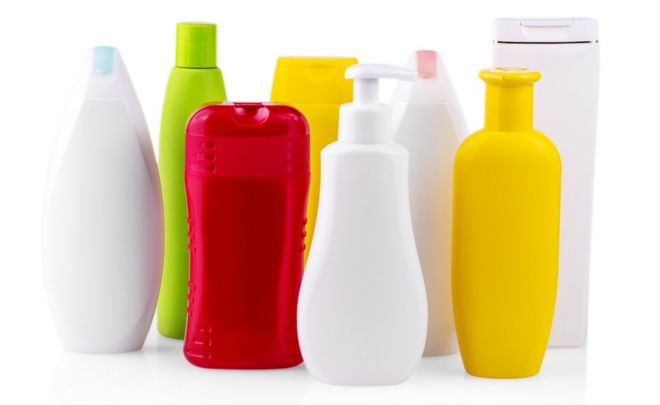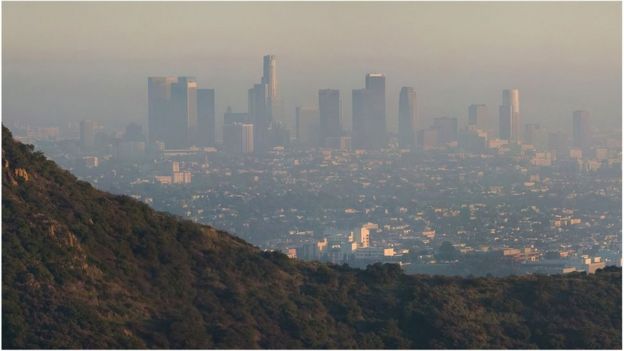Sources of Atmospheric Pollution
"You can see these really rapid decreases in tailpipe emissions [reflecting automakers' newer tehnologies reducing volatile organic compounds in automobile emissions]."
"It just made sense to start looking at other sources and seeing whether they could be growing in relative importance."
"The use of these products emits VOCs in a magnitude that's comparable to what comes out of the tailpipe of your car. One of the main reasons for this is that in the U.S., as well as in Europe, air quality regulations have been really successful at controlling emissions from motor vehicles."
"In some ways, this is a good news story that, as we control some of the bigger sources in the past, the other sources are emerging in relative importance, such as these consumer products."
Brian McDonald, scientist, Cooperative Institute for Research in Environmental Science, University of Colorado, Boulder
"[Gasoline is] stored in an airtight tank, it's burned for energy, and converted mostly to carbon dioxide."
"But these volatile organic compounds [VOCs] that you use in everyday products -- even though it may just be a teaspoon or a squirt or a spray [e.g., paint, perfume, deodorant] -- the majority of those kinds of compounds will ultimately end up in the atmosphere, where they can react and contribute to both harmful ozone formation and small-particle formation."
"But whether it's synthetic or natural, once it gets into the atmosphere it's incredibly reactive."
"One of the things that we're hoping the public takes away from this [study conclusion] is that our energy sources and the consumer products we use every day are continually changing the composition of our atmosphere."
Jessica Gilman, research chemist, National Oceanic and Atmospheric Administration, U.S.
 |
| Getty Images |
Another study, another revelation, another piece of the puzzle to contend with, but how to resolve such issues when they reflect ordinary, everyday-use products contributing to harmful atmospheric emissions is another thing altogether. A new study published recently in the journal Science, releases data discovered by researchers that further complicates the issue of how our energy consumption and use of consumer products contribute to environmental degradation, but there is scarcely a hint of how we should react to alleviate the problem. Other than: STOP!
That being an unlikely solution to a mounting problem, we can only wonder how it is, why it is, and when the full force of our interference with the natural processes of nature will finally culminate to haunt us beyond recognition. The study finding where researchers discovered that petroleum-based chemicals used in perfumes, paints and a myriad of other consumer products can, in the aggregate, emit as much air pollution in the form of VOCs, as motor vehicles, certainly comes as an unwelcome surprise.
It is these very same VOCs' interaction with other particles circulating in the atmosphere to create the presence of smog (ozone) capable of triggering asthma and permanently scar lungs, alongside the production of yet another type of pollution identified as PM2.5 fine particles linked to heart attacks, strokes and lung cancer, informing us in no uncertain terms that we are in the process, through living and using ordinary consumer products, of killing ourselves. Not a very happy thought, to be sure.
Ordinarily when we think of smog, we automatically associate its production with the operation of vehicles. Since the 1970s, however, regulators have mandated automobile producers to invest in cleaner technologies, a process that succeeded in substantially reducing VOC pollution from trucks and automobiles. Which has left a rising share of air pollution caused by pesticides and hair products in lock-step with reduced pollution caused by cars.
The invisible pollutants arising from the use of spray deodorants or from body lotions have been under the radar until this study's findings. A measurement of VOCs in Los Angeles indicated concentrations of petroleum-based compounds appearing at levels substantially more elevated than what could be attributed to fossil-fuel sources alone. Ethanol concentrations were, for example, about five times higher than expected, and they appeared to be on the increase.
According to Dr. McDonald and his colleagues the marked difference in how much of pollutants emitted from lotions and paint products ended up in the air was striking. They point out that though far more gasoline is used than the suspect products, the gasoline is kept in a confined area that mitigates against its being dispersed into the atmosphere. The carbon dioxide emissions from household products on the other hand are found not to be smog-forming; even so they are recognized as a major driver of human-caused climate change.
The researchers discovered that forty percent of the chemicals added to consumer products end up dispersed into the air.
A computer model simulating air quality in Los Angeles was constructed with data from the chemical composition of consumer goods and tailpipe emissions included. With this model, researchers were able to identify the fingerprints of the chemical compounds emitted from personal care products and were enabled to estimate how many VOCs from paints and finishes within buildings were released to the outside world.
The conclusion was that about fifty percent of the VOCs in Los Angeles' air quality could be attributed to consumer products.
Those believing that a solution might conceivably rest in turning to "natural" products would have to be advised that the researchers feel this to be no solution at all, since one class of compounds called terpenes included in many cleaning products for its pine or citrus smell can come naturally from oranges, or alternately be synthetically produced. Natural compounds are responsible for the blue haze formed by terpenes emitted from trees in the Blue Ridge Mountains of Appalachia, as an example.
Tens of thousands of chemicals are used in consumer products. Research has yet to identify which chemicals are most likely candidates for the formation of ozone or PM2.5 particles.
"This research is a useful reminder that discussions of air pollution need to consider all sources of pollutants and that measures targeting cars only address part of the problem."
"Engineering changes to car exhausts have dramatically reduced the amount of pollution produced per mile, meaning that (a) there is now less to be gained from further changes to cars and (b) the public need more information on how their activities, apart from driving, contribute to current pollution levels."
Anthony Frew, professor of respiratory medicine, Brighton & Sussex Medical School, UK
 |
| Image caption Los Angeles: For these particular types of compound, motor vehicles are not the only culprit David Iliff |
Labels: Environment, Pollution, Research

0 Comments:
Post a Comment
<< Home